The present database UUSolf, also called The Uppsala Solfeggio Database, represents the work of cataloguing and linking the repertoire of the Italian solfeggio for the time span roughly between 1730 and 1830. Initially, it was developed as a research tool at a doctoral dissertation project called "Counterpoint and Partimento: Methods of Teaching Composition in Late Eighteenth-Century Naples," recently published as nr. 25 in the series Studia Musicologica Upsaliensia of the Swedish publisher Acta Universitatis Upsaliensis. It can be ordered by clicking the following LINK.
Through an identification string of the first ten highest sounding pitches, UUSolf facilitates the searching and identification of concordant sources within the repertoire of the Italian solfeggio. For a list of sources of this database, click here.
You can search for a solfeggio by using the "Solfeggio Note String" scroll bar on top of the search menu, or you can enter a number of pitches manually in the fields "begins with" or "contains." Click search to find the matching solfeggios. The content of a source can be investigated by scrolling the "RISM Siglum / call number" list. Some libraries, like Montecassino give individual call numbers for every piece in a source. For that reason, a source like I-MC 2-B-20 has received many call numbers, that represent only one piece. To search the complete set of pieces of such a source, You will thus need to use "contains" and then "I-MC 2-B-20". UUSolf allows You to use the Gj numbers, the identification numbers as introduced in Robert Gjerdingen's website "Monuments of Solfeggi". Please observe that Gj12 should be spelled "0012".
All library sigla follow the customary system of the online catalogue RISM (Répertoire International des Sources Musicales) to be found in the following pdf-file.
Several scholars of musicology have contributed to The Uppsala Solfeggio Database
UUSolf.
I wish to express my sincerest gratitude to Nicholas Baragwanath, Maria Luisa Baroni, Riccardo Castagnetti, Clémence Destribois, Felix Diergarten, Robert Gjerdingen, Faith Lanam, Nicoleta Paraschivescu, Marco Pollaci, Claire Roberts, Giorgio Sanguinetti, Mário Marques Trilha, Marianne Tråvén, and Paolo Sullo (Naples) for the most generous they have contributed to the UUSolf database.

